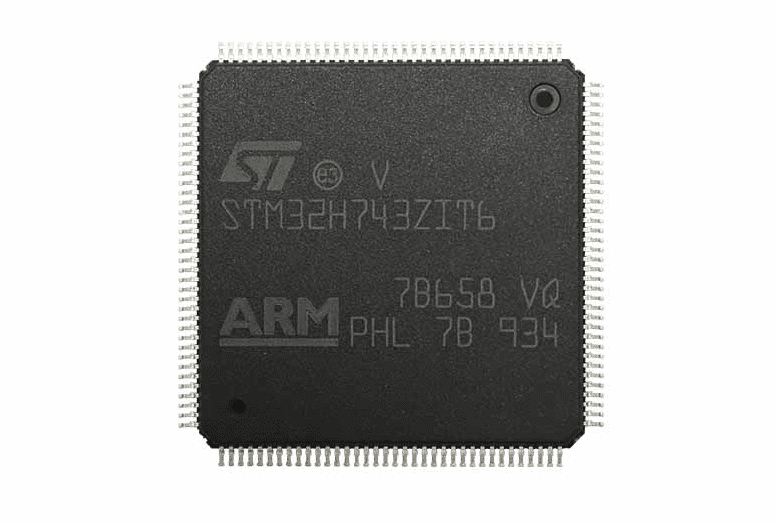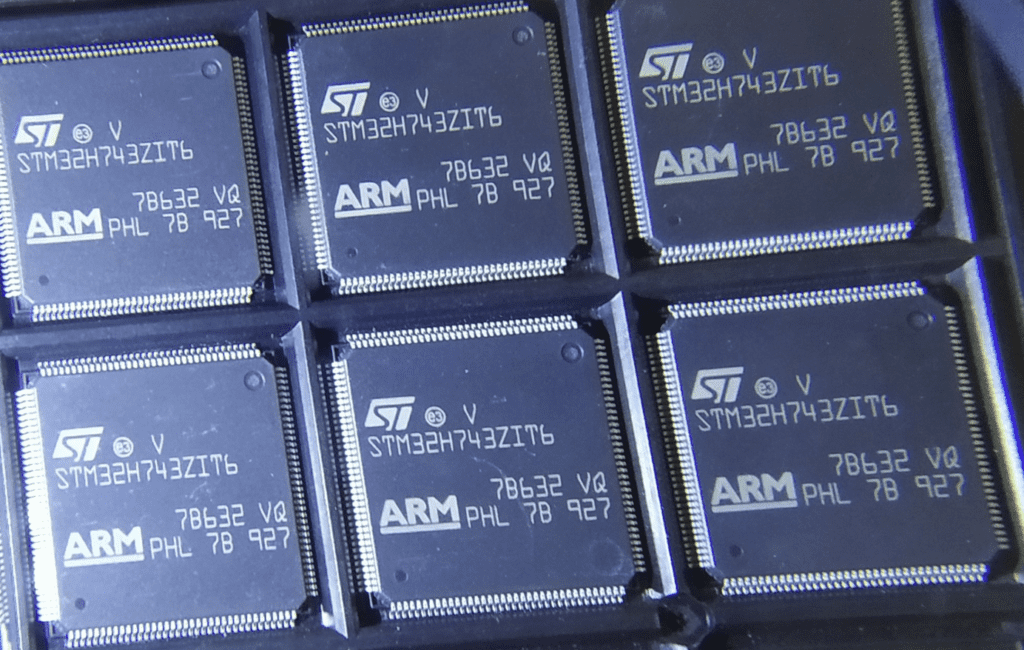High-performance, as it relates to microprocessing, is relative. While some MCUs are deemed “high-performance” because of the speed, others earn the same description because of the improved architecture.
While it is not a one-size-fits-all, the high-performance of a Microcontroller (MCU) can make all the difference on how the device carries out the respective functions. That is why we encourage consumer electronics manufacturers to prioritize an MCU that packs a lot of the properties that combine to deliver the highest levels of performances.
We are pleased to introduce you to STM32H743ZIT6, one of the highly-performing MCUs in the market. In this article, you will learn what features help it to earn that description.

The Analog Peripherals
The most outstanding attribute of the STM32H743ZIT6 is how it integrates a large set of peripherals. Now, these peripherals are further broken down based on the roles or the functions they perform.
The first on the list is a total of 11 analog peripherals which are used for wider analog or audio applications. To break it down further, the analog peripherals include 1 digital filter, which is used for the Sigma Delta Modulator (DFSDM). It also supports up to 4 filters and 8 channels.
There is also a support for the 1 temperature sensor, used for taking a note of or “sensing” of the current reading of the temperature. This would further be measured against the rated or predefined temperature rating to be certain that it doesn’t operate above that temperature.
Included in the analog peripherals are the 2 ultra-low-power comparators, 2 12-bit D/A converters (of up to 1 Megahertz) and 2 Operational Amplifiers (Op-Amps), of up to 7.3-Megahertz (MHz) bandwidth.
The analog peripherals also include 3 ADCs with a 16-bit maximum resolution. The resolution can be up to 3.6 MSPS and up to 6 channels.
CPU Unloading
One of the ideal ways to cut down on an “underperforming Microcontroller” is to release, unload or cut down on the factors that make it to be “loaded” at all times.
The STM32H743ZIT6 Microcontroller identified an overloading of the Central Processing Unit (CPU) to be one of the major reasons why some previous generations of MCUs haven’t been fully-functional.
It is therefore, on that basis, that it integrates a CPU unloading functionality, through the four (4) DMA Controllers.
These controllers are further broken down into 1 basic DMA used with a request router capability and the 1 high-speed Master Direct Memory Access (MDMA) controller. This access controller also comes with a linked link support.
STM32H743ZIT6 also has 2 dual-port DMAs that work with the FIFO.
STM32H743ZIT6 has an Extensive Portfolio of Communication Peripherals
Just as it supports the DMA controllers and the analog peripherals, STM32H743ZIT6 also supports something similar for the communication aspect.
The extensive list of communication peripherals offered here is designed to bolster the communication and relay of wireless information/data within and outside the Microcontroller (MCU).
Examples of the supported communication peripherals are the:
- MDIO Slave Interface
- SPDIFRX Interface
- SWPMI single-wire protocol master I/F
- Four (4) Serial Audio Interfaces (SAIs)
- Two (2) SD/MMC/SDIO Interfaces, with support for up to 125 Megahertz (MHz)
Clocking Performance
When it comes to how a Microcontroller (MCU) functions and is optimized for the best results, the features are always extensive. As we can see on the STM32H743ZIT6, it is not limited to the communication, controlling and analog interfaces. It also extends the performance metrics to how the clocks are performing.
In this regard, the MCU supports both the internal and the external oscillators. For the internal oscillators, we have peripherals like 32 kHz LSI, 64 MHz HSI, 4 MHz CSI and 48 MHz HSI48.
On the other hand, the external oscillators support the following:
- 32.768 kHz LSE
- 4-48 MHz HSE
The clock management peripheral also includes 3 Phase Locked Loops (PLLs) that have a Fractional Mode. To break down these PLLs, two of them are to be used for the kernel clocks, while the remaining 1 is to delegated to the system clock.
The Core Architecture
At the core of the STM32H743ZIT6 MCU is the 32-Bit Arm Cortex-M7 core processor with a double-precision FPU and L1 Cache.
We want to talk about the L1 Cache, which also has 16 kilobytes of instruction cache, 16 kilobytes of data and a frequency up to 480 Megahertz (MHz).
The L1 Cache Basis

The L1 Cache originates from the CPU Cache. According to Wikipedia, a CPU Cache “is a hardware cache used by the Central Processing Unit (CPU) of a computer to reduce the average time to access data from the main memory.”
The CPU Cache came into place following the inability to gain real-time or faster access to the data or the information stored in the main memory of a computer. It is therefore, through the enabling of the CPU cache that this memory can be accessed faster than it could have been.
How the L1 Cache Works
Now, the L1 Cache is one of the hierarchical cache levels commonly used in Central Processing Units (CPUs).
The L1 Cache, according to Techopedia, is a “memory cache that is directly built into the microprocessor, which is used for storing the microprocessor’s recently accessed information.”
The L1 Cache can also be used to process the data access faster, since it is built into the microprocessor, in this case, the STM32H743ZIT6 Microcontroller (MCU).
These are some of the potential benefits of having the L1 Cache built into the STM32H743ZIT6:
1. Faster Data Access
As the primary cache of the microprocessor or Microcontroller (MCU), the L1 Cache helps the users to get real-time access to the most important data. Typically, the priority is for the most recently-stored or accessed data.
2. Dual Caching Capacity
In addition to making the data readily available, the L1 Cache also stores and makes the data accessible in different kinds. For example, it is used to store and access the same from a different cache.
It is possible because the L1 Cache is a “dual cache” that entails having one of the caches storing the data and the other cache containing the instructions for the microprocessor or Microcontroller.
Final Thoughts on STM32H743ZIT6
STM32H743ZIT6 delivers one of the highest levels of performances to be expected of a Microcontroller (MCU). By supporting the use of the L1 (primary) Cache, it opens the way for seamless data flow, just as the support of up to 50 additional peripherals make the configurations easier.


